Растительный пигмент ликопин — полезный для здоровья антиоксидант
По мнению некоторых ученых эта природная молекула претендует на звание самого полезного для здоровья вещества на свете.
Ликопин — это красный растительный пигмент (каротиноид), которого больше всего в помидорах, но он также содержится в арбузе, розовом грейпфруте, папайе и в гак фрукте.
И самое уникальное его свойство — ликопин любит предстательную железу (простату).
Доказательств этому огромное множество.
Мета-анализ 26 исследований с участием более 560 000 человек выявил обратную зависимость между уровнем ликопина и раком предстательной железы.
Исследование почти 50 тысяч мужчин показало, что у тех, кто потребляет больше ликопина, значительно снижается риск развития опухолей простаты.
Еще один мета-анализ 17 исследований показал, что повышенное потребление томатных продуктов (как уже говорилось, основного источника ликопина) снижает риск появления рака простаты на 15-20%.
Есть также множество исследований, доказывающих, что он препятствует появлению доброкачественной гипертрофии предстательной железы, или ДГПЖ.
Но это еще далеко не все. Вместо того, чтобы погружаться в биохимическую эзотерику и долго рассказывать о том, что ликопин делает и как он это делает, давайте просто перечислим несколько фактов о пользе этого каротиноида для здоровья человека.
Список полезных свойств ликопина
- Среди всех каротиноидов (а их более 600) ликопин обладает самой высокой способностью уничтожать свободные радикалы.
Когда мужчины, страдающие бесплодием, принимали по 2 миллиграмма ликопина дважды в день в течение трех месяцев, у 66% из них улучшилась концентрация спермы, а у 73% — подвижность сперматозоидов (когда сперматозоиды более активны, у них больше шансов оплодотворить яйцеклетку).
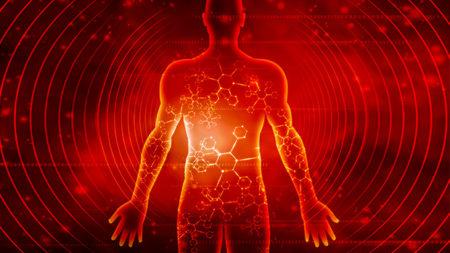
Помимо рака предстательной железы, этот природный пигмент также показал себя в борьбе с раком мочевого пузыря, шейки матки, полости рта, пищевода, поджелудочной железы, лейкемии и прямой кишки.
- Чем больше в крови этого каротиноида, тем ниже глюкоза в плазме крови и уровень инсулина натощак.
Это означает, что он делает вас более чувствительными к инсулину, тем самым препятствуя развитию сахарного диабета II типа и неэффективному углеводному обмену в целом.
- Считается, что всего 5-7 мг ликопина в день снижают риск сердечно-сосудистых заболеваний, но в случае уже существующих болезней сердца и сосудов может потребоваться доза от 35 до 75 мг в день.
- Он, по-видимому, защищает кожу от солнечного повреждения, вызванного ультрафиолетовыми лучами.
Ликопин способен ингибировать тромбоцитарный фактор роста, таким образом подавляя рост и метастазирование меланомы.
У безволосых мышей ликопин улучшает внешний вид кожи, делает более влажной и даже увеличивает ее толщину. (Когда животные стареют, их кожа становится тоньше, что приводит к появлению морщин).
- Повышенный уровень ликопина приводит к снижению риска развития возрастной макулярной дегенерации (одна из причин потери зрения в пожилом возрасте).
- Он способен активизировать адаптивный иммунный ответ клеток (Т и В-лимфоциты, вырабатывающие антитела, которые атакуют специфические инфекции).
- Считается, что ликопин может помочь в борьбе с некоторыми нейродегенеративными заболеваниями (старческое слабоумие и болезнь Альцгеймера).
- Мета-анализ 12 исследований показал, что прием 25 мг ликопина в день, снижает уровень ЛПНП («плохого» холестерина) и понижает артериальное давление.
- Обсервационное исследование, в котором приняло участие 6000 человек показало, что употребление томатов защищает от нескольких видов рака пищеварительного тракта (горла, желудка и толстой кишки).
- Прием до 3 граммов ликопина на килограмм веса тела не имеет никаких отрицательных последствий. Другими словами, он чрезвычайно безопасен.
Как он все это делает?
Ликопин, конечно же, является мощнейшим антиоксидантом, что объясняет многие его полезные эффекты (снижение уровня глюкозы в крови, улучшение качества и количества спермы, обратное развитие опухолей и т.д.).
Но он также является мощным противовоспалительным агентом, обладает гипохолестеринемическим действием (предотвращает образование бляшек в артериях), проявляет сильный иммуномодулирующий эффект (защищает от бактериальных инфекций), проявляет свойства антиангиогенеза (не позволяет кровеносным сосудам «питать» опухоли), обладает значительной способностью модулировать работу ферментов (и тем самым защищает клетки и ткани в целом).
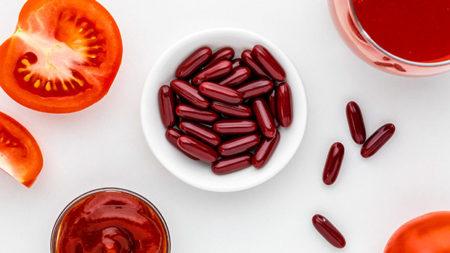
И, возможно, самое интересное, этот каротиноид способствует формированию так называемых «функциональных связей между клетками», то есть он обеспечивает обмен сигнальными молекулами и питательными веществами между соседними клетками. Это очень важно, потому что потеря связи между клетками является одной из ключевых характеристик растущих опухолей.
Сколько томатов нужно съедать ежедневно?
Помидоры обычно содержат относительно большое количество ликопина (примерно 1-2 миллиграмма на 100 грамм овоща). Однако получить достаточное количество или терапевтическую дозу ликопина не так просто, даже если каждый день съедать много томатов.
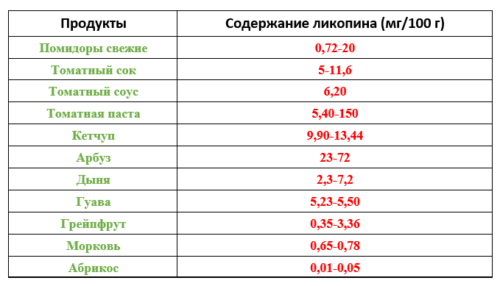
Обидно то, что молекулы ликопина в свежем помидоре находятся в транс-конфигурации. Транс в переводе с латыни означает «другая сторона» и относится к такому состоянию молекулы, когда атомы или функциональные группы находятся на противоположной стороне.
Другими словами, по разные стороны от воображаемой линии, проведенной через середину молекулы. Проблема в том, что транс-конфигурация препятствует усвоению большей части ликопина.
Нам нужно «перевернуть» функциональные группы в цис-конфигурацию («по эту сторону»). Этого можно добиться, подвергнув помидоры воздействию тепла, кислоты, света, или сделав из них пюре.
Но такие вещи, как возраст, пол, гормональный статус, курение, алкоголь, то, насколько хорошо мы пережевываем или перемалываем помидоры, и сколько клетчатки мы съели вместе с ними (клетчатка снижает всасывание), также влияют на то, сколько полезного каротиноида наша пищеварительная система извлечет из томатов.
Поэтому, хотя употребление томатной пасты или тушеных помидоров, по крайней мере, в теории, является более эффективным способом получения достаточного количества ликопина, это все же проблематично. Как и в случае с большинством фруктов (и овощей), содержание любого конкретного каротиноида, такого как ликопин (или любого другого фитохимического вещества), сильно варьируется в зависимости от сорта помидоров, качества почвы, продолжительности вегетационного периода и факторов окружающей среды.
Кроме того, существует вопрос дозировки. По оценкам ученых, для оптимального здоровья нам необходимо до 25 мг в день и более, поэтому получить такое количество из природных источников крайне сложно.
Таким образом, у нас остается два варианта:
- Каждый день есть много томатной пасты, тем самым давая себе шанс получить достаточное количество этого уникального суперполезного каротиноида.
- Принимать ликопин в виде биодобавок.
Успехов
Источники:
- Melanie Caseiro, et al. Lycopene in Human Health, LWT – Food Science and Technology, 29 March, 2020. An overview of the effects of lycopene on humans and lab animals.
- V. Kalai Selvan, et al. Lycopene’s Effects on Health and Diseases, Natural Medicine Journal, March 2011 Vol. 3 Issue 3. An overview of the effects of lycopene on humans and lab animals.
- Ping Chen, et al. Lycopene and Risk of Prostate Cancer A Systematic Review and Meta-Analysis, Medicine (Baltimore). 2015 Aug;94 (33): 31260. This study demonstrates that higher lycopene consumption/circulating concentration is associated with a lower risk of PCa.
- J Athen Lane, et al. ProDiet: A Phase II Randomized Placebo-controlled Trial of Green Tea Catechins and Lycopene in Men at Increased Risk of Prostate Cancer, Cancer Pres Res. 2018 Nov;11 (1): 687-696. This study aimed to establish the feasibility and acceptability of dietary modification in men at increased risk of prostate cancer. Men were invited with a PSA level of 2.0-2.95 ng/mL or 3.0-19.95 ng/mL with negative prostate biopsies. Randomization (3 × 3 factorial design) to daily green tea and lycopene: green tea drink (3 cups, unblinded) or capsules [blinded, 600 mg flavan-3-ol ()-epigallocatechin-3-gallate (EGCG) or placebo] and lycopene-rich foods (unblinded) or capsules (blinded, 15 mg lycopene or placebo) for 6 months. All interventions were acceptable and well tolerated although men preferred the capsules. Dietary prevention is acceptable to men at risk of prostate cancer. This intervention trial demonstrates that a chemoprevention clinical trial is feasible.
- Ying Wang, et al. Lycopene, tomato products and prostate cancer-specific mortality among men diagnosed with nonmetastatic prostate cancer in the Cancer Prevention Study II Nutrition Cohort, Int J Cancer, 2016 June 15;138 (12):2846-55. Among men with high-risk cancers (T3-T4 or Gleason score 8-10, or nodal involvement), consistently reporting lycopene intake ≥ median on both post diagnosis surveys was associated with lower prostate-cancer specific mortality.
- Ping Chen, et al. Lycopene and Risk of Prostate Cancer A Systematic Review and Meta-Analysis, Medicine (Baltimore). 2015 Aug;94 (33): 31260. This study demonstrates that higher lycopene consumption/circulating concentration is associated with a lower risk of PCa.
- J Athen Lane, et al. ProDiet: A Phase II Randomized Placebo-controlled Trial of Green Tea Catechins and Lycopene in Men at Increased Risk of Prostate Cancer, Cancer Pres Res. 2018 Nov;11 (1): 687-696. This study aimed to establish the feasibility and acceptability of dietary modification in men at increased risk of prostate cancer. Men were invited with a PSA level of 2.0-2.95 ng/mL or 3.0-19.95 ng/mL with negative prostate biopsies. Randomization (3 × 3 factorial design) to daily green tea and lycopene: green tea drink (3 cups, unblinded) or capsules [blinded, 600 mg flavan-3-ol ()-epigallocatechin-3-gallate (EGCG) or placebo] and lycopene-rich foods (unblinded) or capsules (blinded, 15 mg lycopene or placebo) for 6 months. All interventions were acceptable and well tolerated although men preferred the capsules. Dietary prevention is acceptable to men at risk of prostate cancer. This intervention trial demonstrates that a chemoprevention clinical trial is feasible.
- Ying Wang, et al. Lycopene, tomato products and prostate cancer-specific mortality among men diagnosed with nonmetastatic prostate cancer in the Cancer Prevention Study II Nutrition Cohort, Int J Cancer, 2016 June 15;138 (12):2846-55. Among men with high-risk cancers (T3-T4 or Gleason score 8-10, or nodal involvement), consistently reporting lycopene intake ≥ median on both post diagnosis surveys was associated with lower prostate-cancer specific mortality.
- Rebecca E Graff, et al. Dietary lycopene intake and risk of prostate cancer defined by ERG protein expression, Am J Clin Nutr. 2016 Mar;103 (3): 851-860 – This study aimed to examine associations between estimated lycopene and tomato sauce intake and the risk of prostate cancer defined by ERG protein expression subtype. Their study population consisted of a prospective cohort of 46,719 men from the Health Professionals Follow-Up Study. During 23 years of follow-up, 5543 men were diagnosed with prostate cancer, among whom 884 were assayed for ERG (426 ERG-positive). With inclusion of only the latter cases, increasing cumulative average tomato sauce intake was associated with a decreased risk of prostate cancer overall (≥ 2 servings/wk compared with < 1 serving/mo; multivariable HR: 0.70; 95% CI: 0.52, 0.95; P-trend = 0.002). With respect to molecular subtypes, cumulative average tomato sauce intake was associated with a decreased risk of ERG-positive disease (HR: 0.54; 95% CI: 0.37, 0.81; P-trend = 0.004) but not with ERG-negative disease (HR: 0.96; 95% CI: 0.62, 1.50; P-trend = 0.10) (P-heterogeneity = 0.04). The conclude that, in particular, tomato sauce consumption may play a role in reducing TMPRSS2:ERG-positive disease.
- JL Rowles, et al. Increased dietary and circulating lycopene are associated with reduced prostate cancer risk: a systematic review and meta-analysis, Prostate Cancer Prostatic Dis. 2017 Dec;20 (4):361-377 – The data demonstrate that higher dietary and circulating lycopene concentrations are inversely associated with PCa risk. This was accompanied by dose-response relationships for dietary and circulating lycopene. However, lycopene was not associated with a reduced risk of advanced PCa.
- Jinyao Chen, et al. Lycopene/tomato consumption and the risk of prostate cancer: a systematic review and meta-analysis of prospective studies, J Nutr Sci Vitaminol, 2013,59 (3):213-23 – Eleven cohort studies and six nested case-control studies were identified through searching of international journal databases and reference lists of relevant publications. Two reviewers independently assessed the study quality and extracted data from each identified study; only studies with sufficient quality were included in the review. The main outcome of interest was incidence of prostate cancer. Compared with consumers of lower raw tomato intake, the odds ratio (OR) of incidence of prostate cancer among consumers of higher raw tomato intake was 0.81 [95% confidential interval (CI) 0.59-1.10]; for consumers of higher level of cooked tomato intake versus lower cooked tomato intake, this OR was 0.85 (95% CI 0.69-1.06); the OR of higher lycopene intake versus lower lycopene intake for prostate cancer was 0.93 (95% CI 0.86-1.01) and the OR for higher level of serum lycopene versus lower serum lycopene level was 0.97 (95% CI 0.88-1.08).
- Yulan Wang, et al. Effect of Carotene and Lycopene on the Risk of Prostate Cancer: A Systematic Review and Dose-Response Meta-Analysis of Observational Studies, PLoS One. 2015;10 (9) – α-carotene and lycopene, but not β-carotene, were inversely associated with the risk of PCa.
- Rhona A Beynon, et al. Investigating the effects of lycopene and green tea on the metabolome of men at risk of prostate cancer: The ProDiet randomised controlled trial, Int J Cancer. 2019 Apr 15;144 (8):1918—1928 – Lycopene and green tea consumption have been observationally associated with reduced prostate cancer risk, but the underlying mechanisms have not been fully elucidated. This study investigated the effect of factorial randomization to a 6-month lycopene and green tea dietary advice or supplementation intervention on 159 serum metabolite measures in 128 men with raised PSA levels (but prostate cancer-free), analyzed by intention-to-treat. The causal effects of metabolites modified by the intervention on prostate cancer risk were then assessed by Mendelian randomization, using summary statistics from 44,825 prostate cancer cases and 27,904 controls. An intervention to increase lycopene intake altered the serum metabolome of men at risk of prostate cancer. Lycopene lowered levels of pyruvate, which our Mendelian randomisation analysis suggests may be causally related to reduced prostate cancer risk.
- Ke Zu, et al. Dietary lycopene, angiogenesis, and prostate cancer: a prospective study in the prostate-specific antigen era, J Natl Cancer Inst. 2014 Feb;106 (2):dt430 – Comparing different measures of dietary lycopene, early intake, but not recent intake, was inversely associated with prostate cancer. Higher lycopene intake was associated with biomarkers in the cancer indicative of less angiogenic potential. Dietary intake of lycopene was associated with reduced risk of lethal prostate cancer and with a lesser degree of angiogenesis in the tumor.
- Li Nang, et al. Lycopene exerts anti-inflammatory effect to inhibit prostate cancer progression, Asian J Androl. 2019 Jan-Feb;21 (1):8085 – The aim of this study was to investigate the efficacy of lycopene in inhibiting prostate cancer. Cell viability assays indicated the dose- and time-dependent toxicity of lycopene in prostate cancer cells. Annexin V/propidium iodide double-staining assays revealed the strong apoptotic effects of lycopene. The levels of inflammatory factors, including interleukin-1 (IL1), IL6, IL8, and tumor necrosis factor-α (TNF-α), in lycopene-treated cells were also reduced by lycopene treatment. With the increasing dose of lycopene, the survival of mice bearing prostate cancer xenografts was significantly improved (P < 0.01), and the tumor burden was significantly reduced (P < 0.01). Their results indicate that lycopene is a promising chemotherapy drug, which inhibits prostate cancer progression by suppressing the inflammatory response.
- Mohhamed M. Rafi, et al. Lycopene modulates growth and survival associated genes in prostate cancer, Journal of Nutritional Biochemistry, Vol 24, Issue 10, October 2013, Pages 1724—1734 – Flow cytometry analyses showed that lycopene, in combination with chemotherapeutic agents and PPARγ agonists, induced modest cell cycle arrest with significant increase in cell death by apoptosis and necrosis on prostate cancer. Gene array and quantitative reverse transcription polymerase chain reaction analyses showed that lycopene alters the expression of growth and apoptosis associated biomarkers in PC-3 cells. These findings highlight that lycopene attenuates prostate cancer by modulating the expression of growth and survival associated genes.
- S. Ellinger, et al. Tomatoes and lycopene in prevention and therapy–is there an evidence for prostate diseases? Akutelle Urol. 2009 Jan;40 (1):37-43 – Tomatoes are discussed to have an important role in the prevention of and therapy for prostate cancer (PCA). This review summarizes the results of original contributions with a focus on interventional studies. Whereas epidemiological studies on BPH prevention provide no evidence for a preventive potential of tomatoes and tomato products, the majority of interventional trials points to an increased DNA resistance against oxidative-induced damage. Even though their effect on a surrogate marker of the IGF pathway cannot be evaluated so far due to insufficient data, the consumption of tomatoes and tomato products may probably protect from PCA–at least when considering low-grade PCA. Thus, regular consumption of these foods can be recommended for the prevention of PCA. Tomato products might also be useful in the therapy for BPH and PCA.
- L Chen, et al. Oxidative DNA damage in prostate cancer patients consuming tomato sauce-based entrees as a whole-food intervention, J Natl Cancer Inst. 2001 Dec 19;93 (24):1872-9 – Thirty-two patients with localized prostate adenocarcinoma consumed tomato sauce-based pasta dishes for the 3 weeks (30 mg of lycopene per day) preceding their scheduled radical prostatectomy. After the dietary intervention, serum and prostate lycopene concentrations were statistically significantly increased, from 638 nM (95% confidence interval [CI] = 512 to 764 nM) to 1258 nM (95% CI = 1061 to 1455 nM) (P < .001) and from 0.28 nmol/g (95% CI = 0.18 to 0.37 nmol/g) to 0.82 nmol/g (95% CI = 0.57 to 1.11 nmol/g) (P < .001), respectively. Furthermore, prostate tissue oxidative DNA damage was also statistically significantly lower in men who had the intervention (0.76 8-OHdG/10 (5) dG [95% CI = 0.55 to 0.96 8-OHdG/10(5) dG]) than in the randomly selected patients (1.06 8-OHdG/10 (5) dG [95% CI = 0.62 to 1.51 8-OHdG/10(5) dG]; P =.03). Serum PSA levels decreased after the intervention, from 10.9 ng/mL (95% CI = 8.7 to 13.2 ng/mL) to 8.7 ng/mL (95% CI = 6.8 to 10.6 ng/mL) (P < .001). These data indicate a possible role for a tomato sauce constituent, possibly lycopene, in the treatment of prostate cancer and warrant further testing with a larger sample of patients, including a control group.
- Danbin Li, et al. MicroRNA-let-7f-1 is induced by lycopene and inhibits cell proliferation and triggers apoptosis in prostate cancer, Molecular Medicine Reports, February 2, 2016 – The results of the current study indicate that miR let 7f 1 is involved in the anticancer effects of lycopene and serves an important role in the inhibition of prostate cancer progression through the downregulation of AKT2.
- Ingvild Paur, et al. Tomato-based randomized controlled trial in prostate cancer patients: Effect on PSA, Clin Nutr 2017 Jun;36 (3):672-679 – Three week nutritional interventions with tomato-products alone or in combination with selenium and n-3 fatty acids lower PSA in patients with non-metastatic prostate cancer. Our observation suggests that the effect may depend on both aggressiveness of the disease and the blood levels of lycopene, selenium and omega-3 fatty acids.
- T Bureyko, et al. Reduced growth and integrin expression of prostate cells cultured with lycopene, vitamin E and fish oil in vitro, Br J Nutr. 2009 Apr;10 (7):990-7 – Malignant cell lines exhibited lower expression of alpha2beta1 with the addition of lycopene to culture media. Supplemental fish oil reduced alpha2beta1 in most invasive cell lines (LNCaP and PC-3). Each nutrient at physiological levels reduced integrins alphavbeta3 and alphavbeta5 in most invasive cell lines (PC-3). The results suggest that integrins may represent an additional target of bioactive nutrients and that the effects of nutrients may be dependent on the type of cell line used.
- Lei Wan, et al. Dietary tomato and lycopene impact androgen signaling- and carcinogenesis-related gene expression during early TRAMP prostate carcinogenesis, Cancer Prev Res. 2014 Dec;7 (12):1228-39 – Consumption of tomato products containing the carotenoid lycopene is associated with a reduced risk of prostate cancer. To identify gene expression patterns associated with early testosterone-driven prostate carcinogenesis, which are impacted by dietary tomato and lycopene, wild-type (WT) and transgenic adenocarcinoma of the mouse prostate (TRAMP) mice were fed control or tomato- or lycopene-containing diets from 4 to 10 weeks of age. Expression of genes involved in androgen metabolism/signaling pathways is reduced by lycopene feeding (Srd5a1) and by tomato feeding (Srd5a2, Pxn, and Srebf1). Collectively, these studies demonstrate a profile of testosterone-regulated genes associated with early prostate carcinogenesis that are potential mechanistic targets of dietary tomato components. Future studies on androgen signaling/metabolism, stem cell features, and neuroendocrine differentiation pathways may elucidate the mechanisms by which dietary tomato and lycopene impact prostate cancer risk.
- Nayan Kumar Mohanty, et al. Lycopene as a chemopreventive agent in the treatment of high-grade prostate intraepithelial neoplasia, Urol Oncol. Nov-Dec 2005;23 (6):383-5 – A total of 40 patients with prostate cancer were randomized into 2 groups: one received 4 mg lycopene twice a day for one year, and the other was periodically followed up. Total follow-up was one year. Results show that lycopene can delay or prevent HGPIN from developing into occult prostate cancer, and there exists an inverse relationship between lycopene and prostate-specific antigen. Being a vegetable carotenoid, lycopene is a safe drug to be used for a longer period without any adverse reaction. They concluded that lycopene is an effective chemopreventive agent in the treatment of high-grade prostate intraepithelial neoplasia, with no toxicity and good patient tolerance.
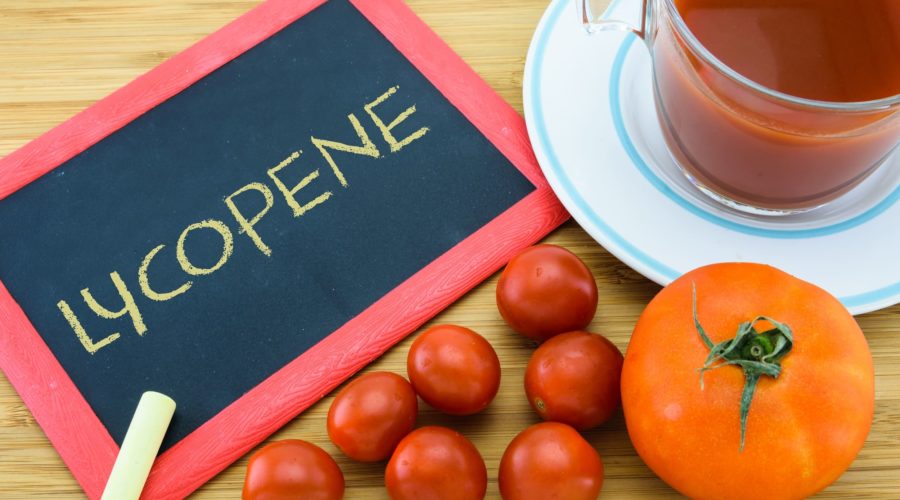





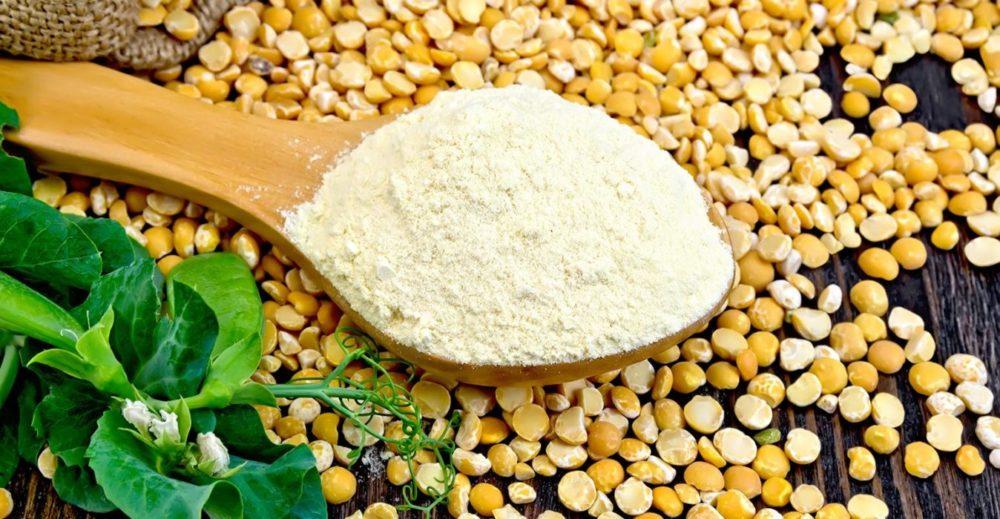



Добавить комментарий